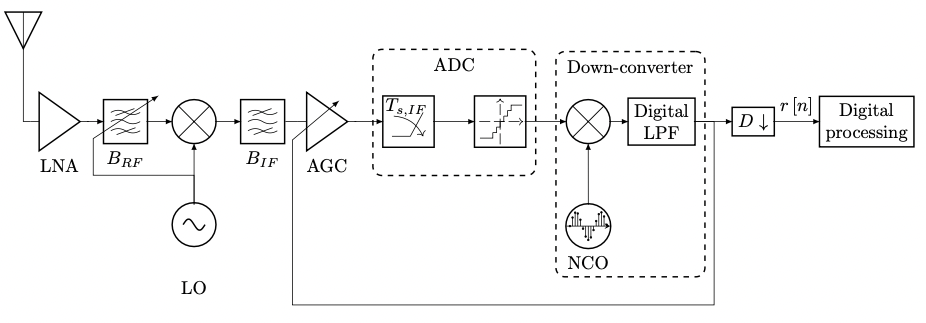This is an example of a block diagram of a radiofrequency front-end (RF-FE).
\documentclass[border=10pt]{standalone}\usepackage{tikz}\usepackage{pgfplots} % loads tikz which loads pgf\usepackage[american,siunitx]{circuitikz}\usetikzlibrary{arrows,calc,positioning,fit}\pgfplotsset{compat=1.15,within block/.style={scale only axis,scale=0.423,anchor=center,axis x line=middle,axis y line=none,enlargelimits=0.1,width=2cm,height=15mm,xtick=\empty,ytick=\empty,domain=0:85,samples=15,tickwidth=0,clip mode=individual,every axis plot/.append style={smooth,mark options={draw=black,fill=black,mark size=1pt}},before end axis/.code={\node [draw,thick, shape=circle, inner sep=-2pt,fit=(current axis), label={below:{NCO}}] (nco) {};}}}\newcommand{\mixer}[2]{ % #1 = reference coordinate, #2 = name\node[draw, thick, shape=circle, minimum size=24pt, at={#1}](#2){};\draw[rotate=45,line width=0.5pt] (#2.center)+(0,-12pt) -- +(0,12pt);


